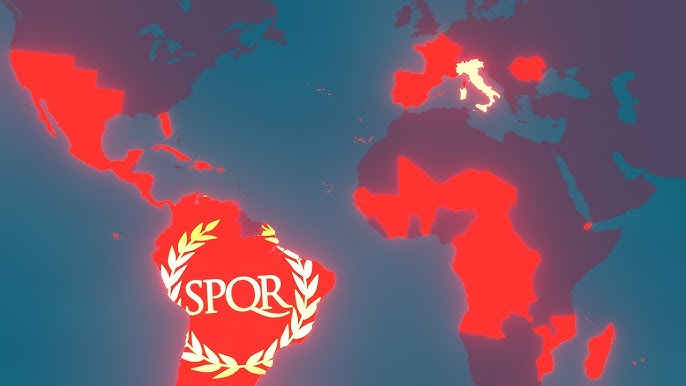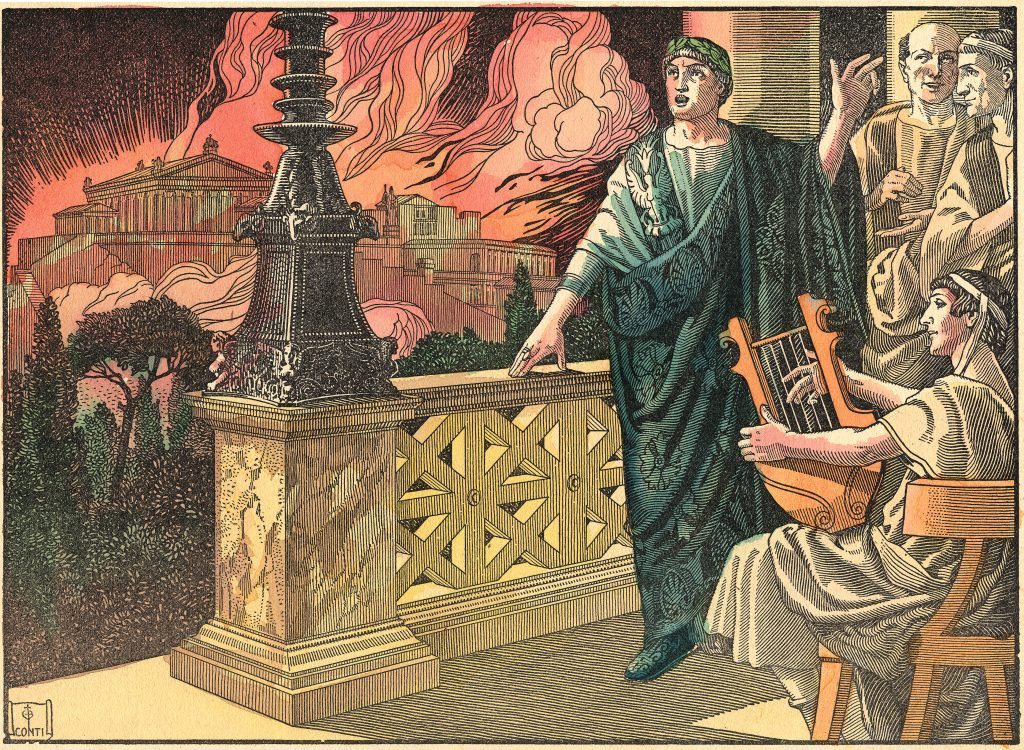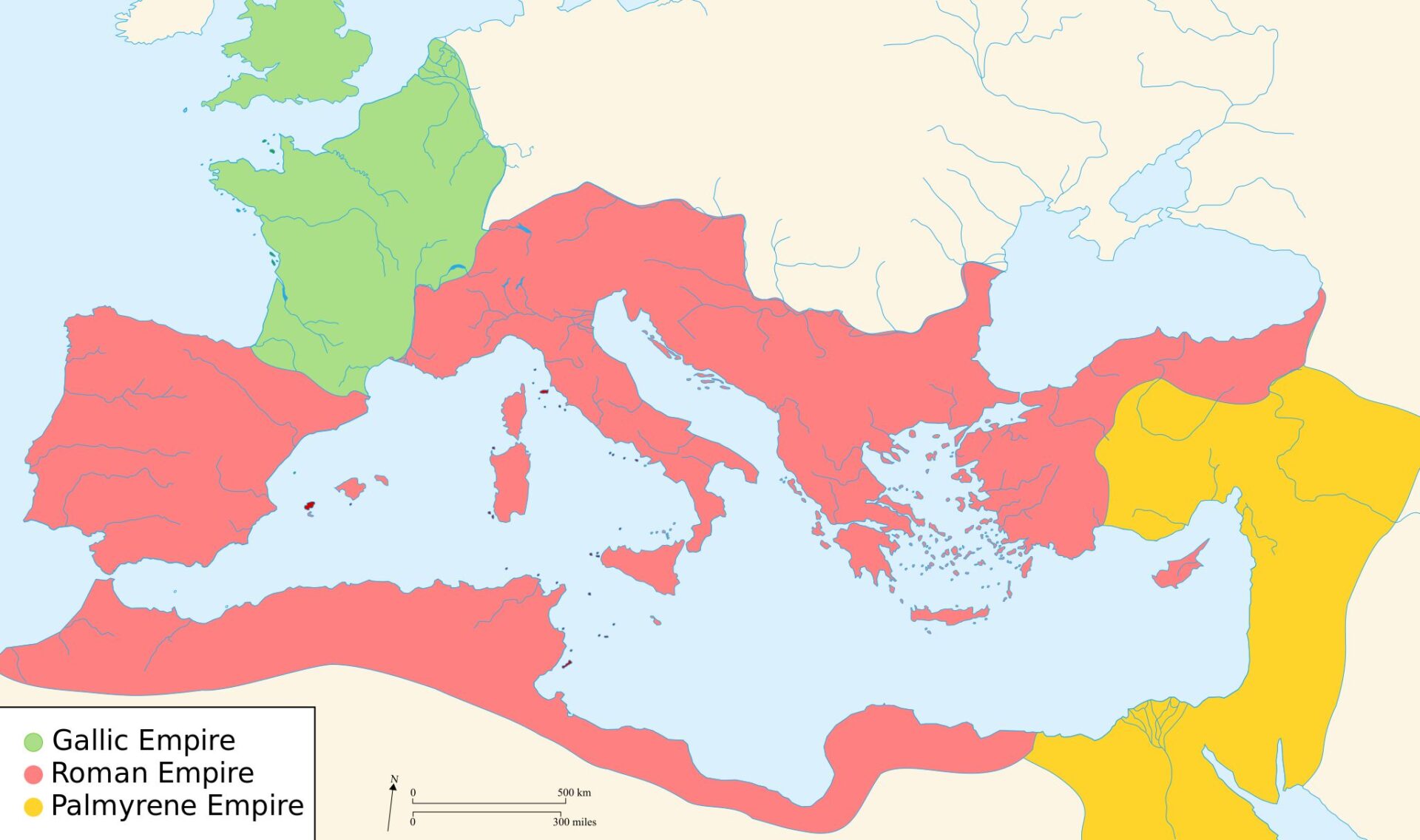In 410 A.D., the Visigoths under Alaric I entered Rome, causing great damage and marking a critical turning point for the Roman Empire. This event not only weakened Rome physically but also highlighted deep-seated issues like political corruption and military disarray. Despite facing numerous challenges, including inept leadership and economic troubles, the question of “what if” still lingers. It is intriguing to consider what might have happened if Rome had managed to address its internal problems and avoid this downward spiral.
The Roman Empire’s fall was the result of various issues, including unsteady leadership, military reforms gone awry, and an economy in distress. Emperors like Tiberius and Nero made decisions that hastened the empire’s decline, impacting everything from military strength to economic stability. Their reigns exemplified the struggle against internal discord and political corruption. Imagining a scenario where these challenges were met head-on opens a window into how history might have been different, prompting us to rethink the potential course of civilizations if the Roman Empire had remained intact.
Key Takeaways
- The sacking of Rome revealed deep problems within the Empire.
- Leadership failures and corruption sped up the decline of Rome.
- Imagining a different history offers new insights into Rome’s potential longevity.
The Seizure of Rome in 410 A.D.
Alaric I and the Visigoth Tribe
In the year 410 A.D., the Roman Empire faced a critical moment when Alaric I led the Visigoth tribe to breach the walls of Rome. This was a significant event because it marked the first time in 800 years that Rome had been overtaken by an external force. The Visigoths looted, pillaged, and brought great destruction upon Rome, leaving the once powerful city in ruins.
Alaric’s leadership was instrumental in this event. As the Visigoth king, he harnessed the strength and resolve of his troops to overwhelm Roman defenses. The military of Rome was scattered, and internal corruption was rampant, making it difficult for the Empire to defend itself effectively against the invading forces. This event was not just a momentary fall but a precursor to the decline of the Roman Empire, which would ultimately lead to its collapse about 60 years later.
Rome’s weakening was compounded by multiple factors. The sacking highlighted the Empire’s vulnerabilities, both in military and political stability. The deposition of Romulus Augustus, the last emperor of the Western Roman Empire, symbolized the end of a powerful era, setting the stage for a new historical trajectory in the region. The impact of the Visigoths‘ invasion had ripple effects that contributed significantly to the reshaping of European history.
Hypothetical Scenario: An Empire Unfallen
Imagine a world where the Roman Empire did not collapse. In the early 5th century, when Alaric and his Visigoths sacked Rome, it marked the beginning of the end for the Empire. Internal struggles and weak leadership contributed to its fall in 476 A.D. But what if these issues were addressed and the Empire remained strong?
The stability of the Roman Empire heavily depended on its leadership. Tiberius, the second Emperor, made strategic errors by failing to conquer the Germanic tribes and allowing the Praetorian Guard to grow too powerful. This elite military unit, initially meant to protect the Emperor, became influential in political decisions, disrupting imperial successions. Without this internal strife, the Roman Empire might have weathered the storms of change more effectively.
Nero’s extravagant spending led to inflation and economic woes. During his reign, resources were squandered, which left the Empire vulnerable during crises like the Great Fire of Rome. He further destabilized the economy by minting more coins, damaging the currency’s value. Without these financial missteps, the Roman economy could have remained robust.
Caracalla’s reforms aimed to bolster the Empire but inadvertently weakened the military. By granting citizenship to all free men, he reduced the incentives for military service. This change shrunk the pool of dedicated soldiers, weakening the Empire’s military capabilities. Had this policy been different, the Roman military might have retained its former might.
In this alternate history, by maintaining strong leadership, a stable economy, and a loyal military, the Roman Empire could have continued to shape the world. Its enduring presence might have created paths dramatically different from the histories we know today.

Comprehending the Decline to Envision the Ascent
In 410 A.D., the Visigoths, under Alaric I, invaded and ransacked Rome, which had been untouched by foreign forces for 800 years. This marked a significant turning point, showing the Roman Empire’s vulnerability. This once-mighty empire faced a breakdown, with its military weakened, corruption prevalent, and internal conflict abundant. The eventual removal of Romulus Augustus in 476 A.D. signaled its irreversible decline.
One of the chief reasons for this downfall was the rise of influential yet misguided emperors. Tiberius Julius Caesar Augustus, who ruled from 14 to 37 A.D., did not manage to defeat the Germanic tribes, a miscalculation that eventually weakened Roman military power. Under his reign, the Praetorian Guard, initially protectors of the emperor, gained undue political influence, disrupting the succession stability crucial for the Empire’s endurance.
Corruption further plagued the Empire’s political structures. Emperor Nero, reigning from 54 to 68 A.D., exemplified the impact of misuse of power. His reckless spending on extravagant projects led to a financial crisis, forcing Rome’s treasury to fall short. In response, Nero opted for minting excess coins, devaluing the currency and sparking a devastating pattern of inflation, a precursor to the Crisis of the Third Century.
Caracalla, whose rule spanned from 198 to 217 A.D., attempted economic revival by granting Roman citizenship widely, aiming to bolster taxable income. This policy unintentionally diminished military enrollment, since citizenship was no longer a reward for military service. The military, a pillar of Rome’s strength, suffered as a result, weakening further post-Constitutio Antoniniana.
The impact of these leaders’ decisions highlights how deeply intertwined military, economic, and political aspects contributed to Rome’s collapse. Each assumption and policy change initiated ripples that eroded the once solid foundation of Roman dominance, leading to its eventual downfall and forever altering the course of history.
Rulers and Their Impact on Ancient Rome
Tiberius’s Leadership and Northern Tribes
Tiberius took over as the leader of Rome, but his time was marked by problems with the northern tribes. He couldn’t defeat the Germanic tribes, which made Rome weaker. This failure caused troubles for Rome for a long time.
Guard in Rome and Leader Choices
The Praetorian Guard began to have more power during this time. They were supposed to protect the Emperor, but they started controlling Roman politics instead. They often had a big hand in choosing new leaders, making it hard to have a steady line of rulers.
Nero’s Leadership and Spending Problems
Nero led Rome for 14 years, but his spending choices caused financial trouble. He spent too much on unnecessary projects, leaving Rome’s money reserves low. To fix this, he created more money, which led to the currency losing its value and started a money problem that lasted for years.

Caracalla’s Citizenship Change
Caracalla decided to make all free men in Roman lands citizens to improve tax income. While this seemed like a good idea, it led to fewer people joining the military. People didn’t need to serve to become citizens anymore, reducing the number of soldiers willing to fight for Rome.
The Effects of Discord Within
The Roman Empire’s struggle with internal discord had significant effects on its stability. Issues such as corruption, political chaos, and leadership failures played crucial roles in its decline. Poor decisions made by emperors became recurring problems, resulting in weakened authority and unsolved conflicts. This, in turn, led to disruptions that eroded the empire’s foundation.
Corruption found its way into political and administrative areas, making it hard for the empire to function well. Figures like Nero, infamous for wasting resources on grand but pointless projects, left the treasury empty during emergencies. His decisions also triggered a cycle of money devaluation, which contributed to economic instability.
Leadership failures also hurt the empire. Caracalla’s attempt to fix economic issues by expanding citizenship, ultimately reduced the military’s strength. Before, serving in the army was a way to earn citizenship, ensuring loyalty and service. After this policy change, the army suffered as motivation to enlist faded. These leadership oversights compounded the challenges faced during this period of the empire.
Changes in the Military System and Their Impact on Army Numbers and Power
Soldiers’ Needs and Economic Instability
During Marcus Aurelius Antoninus’s rule, inflation made life difficult for Roman soldiers. They wanted higher pay due to rising living costs. To address this, Caracalla took a major step to improve the economy by making all free men in Roman lands citizens. This was intended to increase tax revenue. Yet, instead of strengthening the Empire, it contributed to a weaker military force.
Caracalla’s Policy and Its Influence on Military Enrollment
Before Caracalla’s decree in 212 A.D., Roman citizenship was seen as a reward for military service, achieved after serving 25 years. This policy helped maintain a strong and loyal army, as many sought citizenship and the privileges it provided, like voting and land ownership. Once these benefits were granted to all free men, the incentive to join the military diminished. This change significantly reduced the size of the Roman army, showing the unanticipated results of Caracalla’s decision.
The Crisis of the Third Century
The Roman Empire faced a critical period known as the Crisis of the Third Century, which nearly led to its downfall. This era was marked by severe economic difficulties, military struggles, and political chaos. The instability began with a failing economy, driven largely by repeated currency devaluation. Emperors often minted more coins to cover extensive military and infrastructure expenses, which triggered massive inflation and eroded the value of Roman money.
The Praetorian Guard, initially established to protect the emperor, wielded significant political power by interfering in succession, contributing to political uncertainty. As a result, the Empire saw a rapid turnover of emperors, with many forcibly removed from power. Corruption was widespread within the political system, weakening the overall structure and governance of the Empire.
The military, once the backbone of Rome, suffered due to internal and external pressures. Caracalla’s decision to extend Roman citizenship eroded incentives for military service, leading to recruitment challenges. Furthermore, constant threats from outside invaders and internal rebellions stretched the Roman military thin, leaving territories vulnerable.
These intertwined issues showcased the vulnerabilities within the Roman system. Despite the collapse being delayed, these factors cumulatively led to significant setbacks for the Empire during the Third Century, setting the stage for future challenges.

Rome’s Widespread Political Dishonesty
In the Roman Empire, dishonesty in politics was everywhere. For example, the Praetorian Guard, originally meant to protect the Emperor, became a hidden power controlling many political decisions. This led to a weak leadership structure.
The lavish projects by Emperor Nero are another example. His spending habits emptied the city’s funds, leading to disastrous results, including the infamous Great Fire of Rome. In a desperate attempt to refill the treasury, Nero imposed taxes and minted more money, which devalued the currency and sparked inflation. This cycle of excessive spending and economic turmoil continued under his successors.
Then there’s Emperor Caracalla, who offered Roman citizenship to all free men in the empire to gain more revenue. This decision shrank the military, as citizenship was previously a reward for service in the military. Such choices contributed to Rome’s difficulties in maintaining a strong army.
Dishonesty within Rome’s leadership played a huge role in weakening the empire, paving the way for its eventual collapse.
Comparing Historical Military Operations
In 410 A.D., the Visigoths, led by Alaric I, stormed through the defenses of Rome. This act marked a pivotal shift, as the city hadn’t faced such an invasion in 800 years. The Roman Empire, already struggling with scattered military forces and internal corruption, witnessed a significant decline after this event. The consequences were profound, setting the stage for the fall of the empire around 60 years later.
Tiberius Julius Caesar Augustus assumed the role of the second Roman Emperor from 14 to 37 A.D. Under his leadership, serious challenges emerged, including difficulties with the Germanic tribes to the north. These tensions escalated as conspiracies began to surface, particularly with the influential Prefect of the Praetorian Guard, Sejanus. Initially established for elite protection, the Praetorian Guard eventually became a dominating force in Roman politics, affecting key decisions on imperial succession and undermining the empire’s stability.
One of the critical issues plaguing the empire was embedded corruption, highlighted by the reign of Nero Claudius Caesar Augustus Germanicus. Nero, ruling for 14 years, spent lavishly on meaningless projects, draining the empire’s resources. When a great fire struck Rome in 64 A.D., the empire found itself financially unprepared. In a bid to rectify this, Nero resorted to minting additional currency, sparking an inflation cycle that contributed to the economic struggles of the Roman Empire during the Third Century.
Later, Emperor Caracalla attempted to address the economic crisis by granting Roman citizenship to all free men, hoping to bolster tax revenue. This decision, however, inadvertently reduced incentives for people to join the military, as citizenship could now be obtained without military service—a shift that led to a weaker armed force at a time when the empire greatly needed strong military support.
